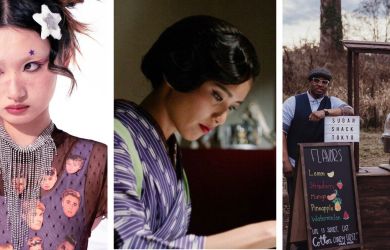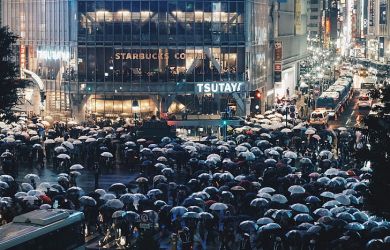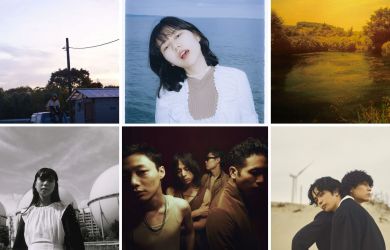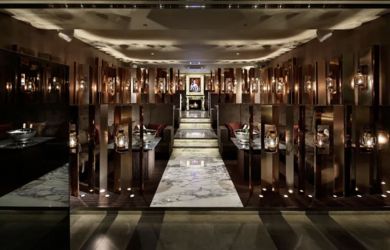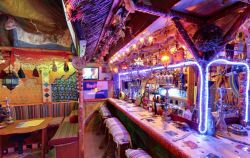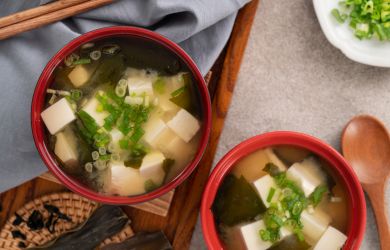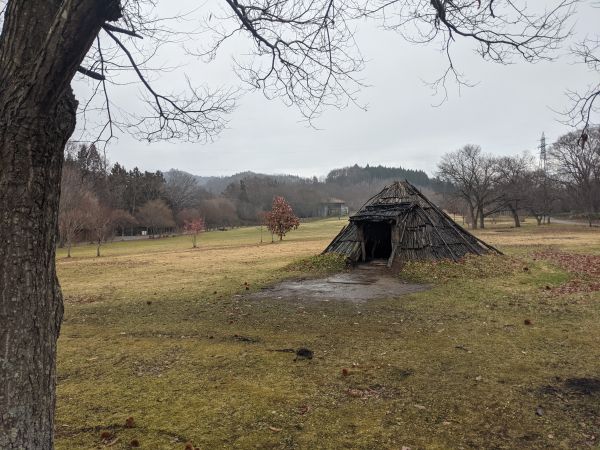
December 24, 2021
A Second Chance at Iwate
Ghosts, ancient aliens, mannequins and more
If you’ve lived in or around Tokyo for a while now and you’ve found the time for some domestic travel, chances are you’ve managed to tick off most of the “go-to” areas — takoyaki in Osaka, culture in Kyoto, history in Hiroshima, maybe even some skiing in Niigata and Hokkaido. I’ve been lucky enough to enjoy a number of road trips in the short time that I’ve lived in Tokyo, one such trip being a three-day drive from Shimokitazawa in Tokyo to Shimokita Peninsula at the top of Honshu. I had a great time on that trip but, in my haste to reach my (largely arbitrary) destination, I failed to make the most of my journey. Foolishly fast-tracking it through Japan’s second biggest prefecture — Iwate, I missed out on a large chunk of what Tohoku has to offer. Thankfully, I had a second chance to experience Iwate during a recent trip, taking it slow this time around to make the most of the incredibly historic, lush and hospitable prefecture.
Obonai
The first destination of this trip was Kitaichi Onsen in Ninohe, around 600 kilometers north of Tokyo, right near the border of Aomori prefecture. Forgoing the drive in favor of the Shinkansen this time, the Hayabusa Shinkansen took us directly from Tokyo Station to Ninohe Station in just over three hours. One ekiben and half a season of “Seinfeld” later we’d arrived at our destination. The reason we chose Kintaichi Onsen was its connection to stories about the Zashiki Warashi (parlor children) that supposedly occupy the local ryokan. Zashiki Warashi are said to be spirits that resemble small children and protect the houses or ryokan that they inhabit, also bringing good fortune to the people they encounter. Ryofukuso ryokan was known as a hotspot for zashiki warashi encounters prior to burning down in 2009 but, during the fire, the zashiki warashi who occupied Ryofukuso are said to have relocated to Obonai — about 100 meters down the street. This is where we would be spending the night.
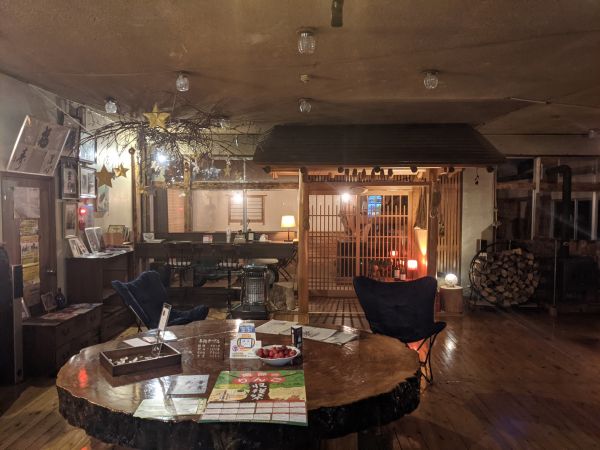
Before arriving at Obonai, I made sure to make a brief stop at a local Lawson to buy an azuki treat as an offering to any zashiki warashi that might occupy the room I’d be staying in. I’ve never been a big believer in ghost stories but, if I was going to have a ghost encounter, I wanted to make a good impression and supposedly azuki snacks are the way to do that. Obonai has been around for about 80 years and is run by the Oodate family, who took over the business around 40 years ago. When we arrived, we were greeted by the effervescent hostess, Momoko Oodate, who runs the business with her husband and his parents. Despite Momoko’s reluctance to derive business from any kind of zashiki warashi habitation (Ryofukuso reopened recently and she’s hesitant to encroach on their business), the first thing you notice when you arrive at Obonai is that this is absolutely the kind of place a mischievous ghost child would inhabit. The taxidermy lion and tiger, the creaky floors and the and the messages from previous lodgers in the lobby detailing their zashiki warashi encounters all made me wish I’d brought more azuki treats. The next thing you notice, though, is the warm, homey feeling Obonai generates, largely through the hospitality of Momoko and her family. As we got to talking, Momoko explained that she grew up in a poor household above a barber shop outside of Ninohe and, unable to afford to take up an instrument or sport, she took to drawing and continues to this day, illustrating the menus and artworks that are featured throughout the inn. She tells us that she was incredibly quiet as a child, discouraged by her parents from making too much noise above her father’s barbershop. But, since marrying her husband and moving in with his parents, she says that while the men take care of the cooking, she and her mother-in-law take care of the chatting. When asked about the dried roses hung near the check-in counter, Momoko explained that her father-in-law gives his wife roses every year on the anniversary of their first date and named the Ryokan after her maiden name.
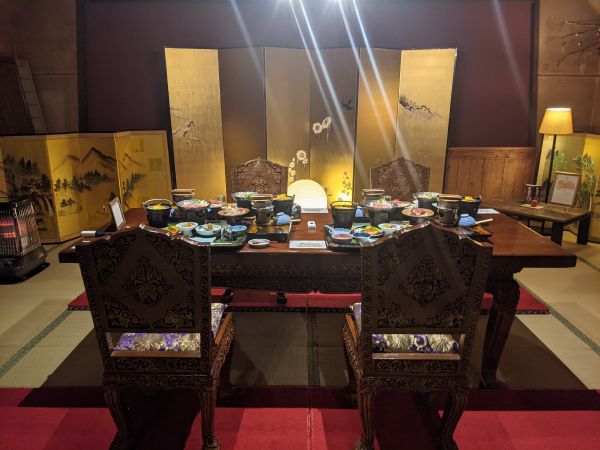
After putting down our bags and checking any dark corners or halls for signs of poltergeist, Momoko showed us to the dinner table. The menu, hand drawn and explained by Momoko, featured local delicacies such as ayu no shiyoyaki (salt-grilled sweet fish) and hittsumi (hand pulled dumpling) soup. Over dinner, Momoko explained to us that she and her two sisters were all named after some kind of foodstuff — peach, strawberry and a third name we’d have to guess in the morning. After dinner I sat in front of the fireplace for a while and then took a dip in the onsen — it was now time to place out my offering to the ghost children and listen out for any supernatural activity until I fell asleep.
In the morning I checked my belongings to see if anything had been moved throughout the night and I was vaguely disappointed to discover that everything was as I had left it. Back in the dining room for breakfast, Momoko finally indulged our curiosity about her poltergeist housemates. While she was hesitant to claim that they had relocated from Ryofukuso to her establishment, she did admit that unusual things do occur from time to time and even showed us a video of her child playing in the living area which featured a strange, glowing orb in the corner of the room. Sensing she was less than eager to dwell on the topic of zashiki warashi, conversation turned to the town and its lifestyle. She explained that the local community is incredibly hardworking, resilient, supportive of each other and, while many locals are people of few words, “they all have very warm hearts.” The next thing on my agenda was to get some closure on the cliffhanger that Momoko had left the night before and, after I attempted several incorrect guesses, she revealed that her youngest sister’s name is Milk.
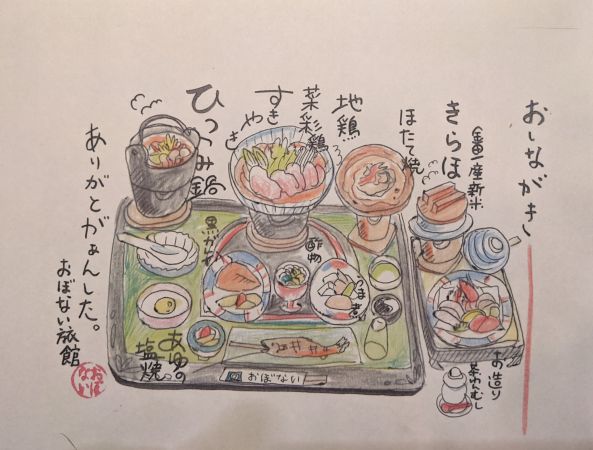
The Goshono Jomon Site
After Momoko waved us off at the door, we headed north to the Jomon Museum located in Ichinohe. I knew little to nothing about ancient Japanese history before arriving so there was plenty for me to take in when we arrived. Jomon refers to the period between 14,000 and 300 BCE, as well as the people who existed throughout northern Tohoku and Hokkaido during that period. The Goshono Jomon Site is one of several sites scattered throughout Iwate, Aomori, Akita and Hokkaido and the river running through the site and the trees surrounding the site perfectly suited the sedentary lifestyles of the ancient people that once inhabited the area. Walking along the long, wooden tunnel towards the museum entrance felt like stepping back in time and, at the end, I found myself in a wide-open field which features numerous reconstructed Jomon-period huts. The museum itself houses a number of ancient Jomon artifacts such as spearheads, pottery and dogu sculptures, which have inspired theories about visits from ancient aliens for their resemblance to astronauts or extraterrestrials and the complexity of their design. At the museum we were treated to an ancient fire-making technique which is said to have been used by the Jomon people to prevent insects and protect the wood in their structures from mold and fungus.

Urushi Lacquerware
Continuing the historic aspect of our tour, we made our way to the Joboji Urushi workshop in Ninohe. In 2020 UNESCO declared “traditional skills, techniques and knowledge for the conservation and transmission of wooden architecture” an Intangible Cultural Heritage of Japan. One aspect of this Intangible Cultural Heritage is the extraction and collection of urushi (lacquer) from the urushi tree forests around Ninohe. Using the same techniques and tools developed roughly 9,000 years ago during the Jomon period, Ninohe’s local urushi tappers have played an active role in the restoration of many cultural properties in Japan such as the Kinkakuji in Kyoto and the Nikko Toshogu in Tochigi prefecture. Seventy percent of the lacquer that is produced in Japan comes from Ninohe and each tree only yields around 200 grams of sap every six months, making every drop precious. The delicate and time consuming process undertaken by the tappers was explained inside the workshop where we saw craftsmen creating lacquerware bowls and cups for sale throughout the country. With each piece of wooden crockery requiring eight coats of lacquer and months of curing time between each coat, the craftsman explained that urushi bowls and cups are designed to be used for life, gaining their own unique and distinct shine with each year of use.
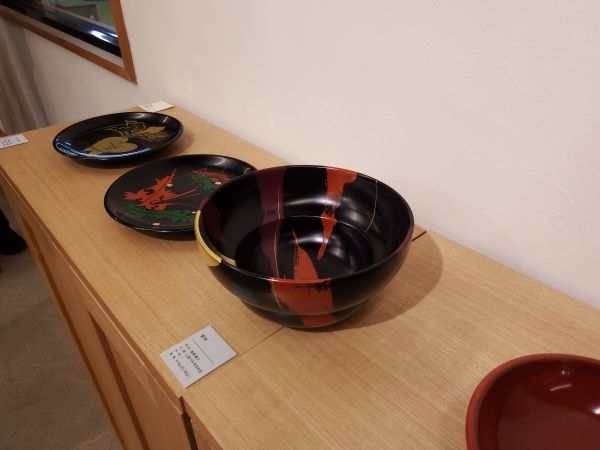
Senyokan
Following our trip to the urushi workshop, we returned to Kindaichi for our second shot at encountering zashiki warashi. Incase Obonai wasn’t a prime location for such an encounter, the 60-year-old Senyokan, with its almost every inch covered in toys and stuffed animals, seemed like an ideal spot for ghost kids to take up residence. Senyokan is operated by an elderly woman with a youthfully mischievous grin who several years ago, after noticing mysterious white orbs (I was beginning to notice a trend) in many of the photos taken inside the ryokan, placed toys and candy throughout the building in order to entertain her protective, fortune-bringing guests. After a cursory Google search, it became apparent that Senyokan is a favorite among the Zashiki Warashi-seeking community, with more than a handful of online reviews retelling mischievous encounters. Once again setting out some azuki treats before bed, I quickly fell asleep wondering if the elderly hostess herself wasn’t a zashiki warashi in disguise. Awaiting breakfast, I was eager to hear if any of my travel companions experienced anything weird during the night and I was more than a little shocked to hear that my travel companion had awoken to the feeling of cold skin above her blankets throughout the night and, struggling to get back to sleep, arose to find that her slippers had been oddly repositioned horizontally to the locked door in her genkan. I wondered if all the stories this weekend hadn’t played tricks on my friend’s mind but I also couldn’t shake the fact that stories of zashiki warashi have probably lasted thousands of years for good reason.
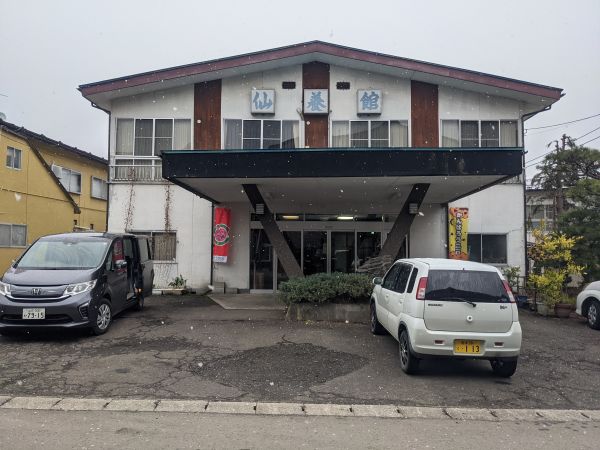
Ohno Campus
As snow began to fall that morning we made our way to the regional area of Hirono to try our hand at some woodwork. What was once a roadside resting area had since been converted into “Ohno Campus,” a major facility designed to offer visitors hands-on experiences in woodworking, pottery, textiles and farming. Also featuring a hotel, onsen, golf course and observatory, this is just one of the many inventive projects undertaken by the region to boost tourism and engagement with the community since the 2011 Tohoku earthquake and tsunami. After lunch, for which we tried the local red chicken ramen, we made our way inside the workshop space where we were greeted by a local woodworking instructor who took us through our options. Having little to no previous woodworking experience, I chose what seemed like the simplest option available and, with more than a little help from the instructor, I walked away from Ohno Campus with my very own pair of chopsticks handmade with local Hirono wood.
Fishing Taiken
From Ohno campus we drove through the mountains, past rice fields to the coast. Looking out the window during the drive, it was obvious that a lot of redevelopment was still ongoing since the 2011 earthquake and tsunami. Arriving in a small fishing village we met with a third-generation fisherman, community leader and fishing instructor and his wife. Now 74 years old, our host recalled getting his sea legs from a young age, often going out on trips with his grandfather before he could walk. As we jumped into his small fishing boat and headed out to sea, he pointed out the 30-meter-high cliffs along the coast and explained that the water from the 2011 tsunami cleared those cliffs, devastating the local environment and damaging nearly 10,000 fishing vessels in the local area as well as nearly all of the 111 local ports and fish processing centers. After we toured the shoreline, we dragged in a 300-meter net which had caught some 30 – 40 fish since the morning, and we headed back to shore where we prepared the fish for sale the next morning while the elderly couple explained more about the local fishing industry, subconsciously slipping into their local dialect as they became more comfortable with their visitors. As we said our goodbyes and headed to the final stop of our trip, I was reminded of what Momoko had told us about the strength and resilience of Iwate’s locals.

Wining and Mining
With the sun beginning to set, we headed south along the coast to Marine Rose Park Noda Tamagawa and Suzuminooka Winery. Marine Rose Park, once an active manganese mine, has since been converted into an “underground museum” and home to a five-piece idol group comprised of mannequins dressed as miners. Thirty seven mannequin miners are situated throughout the underground museum to demonstrate the work that was carried out in the mine prior to its closure and, in an AKB 48-style poll, each year five of those 37 mannequins are selected by members of the public to become that year’s “Mangan Boys.” More than just pretty faces, the Mangan Boys maintain a popular YouTube account and occasionally visit the surrounding Morioka and Hachinohe cities in order to promote Noda Village tourism. Also housed within the mine are wine barrels from the adjacent Suzuminooka Winery which, due to the ideal temperatures and humidity year-round, uses the mine as a wine cellar. Suzuminooka winery is a small, independent business which began operations in 2016 in an effort to bring revenue and tourism back to the region after the 2011 earthquake and tsunami. As it grew dark we were treated to a tour of the underground museum and winery and, as we waved goodbye to the Mangan Boys the sun had all but disappeared behind the mountains in the west and it was time to begin our journey back to Tokyo.
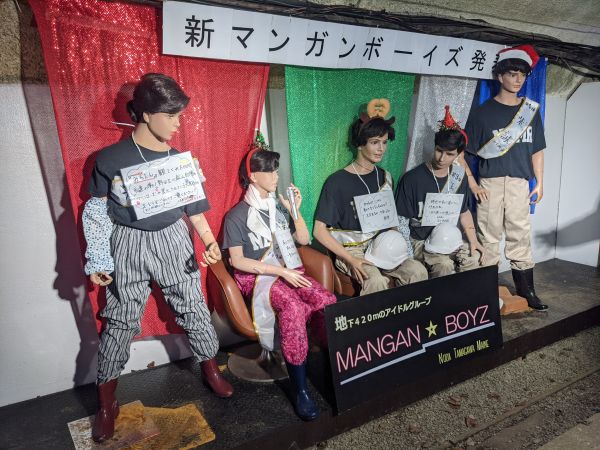
Heading back to Tokyo on the Shinkansen, I realized how much of Iwate I’d missed on my previous Touhoku road trip in my haste to reach my arbitrary destination on the coast of Aomori. By taking my time on this trip I was able to appreciate the strong feeling of community that exists in the area, the pride that the Iwate locals have for their prefecture and their commitment to the revitalization of their economy and infrastructure after the 2011 earthquake and tsunami. Iwate is rich with the kind of ancient history and traditional folklore that many visitors to Japan come looking for but often miss when getting caught up in the allure of the big cities. Locals say that Iwate is a place where you forge your own path and, when you take the time to notice, you’ll see that Iwate is doing just that.
